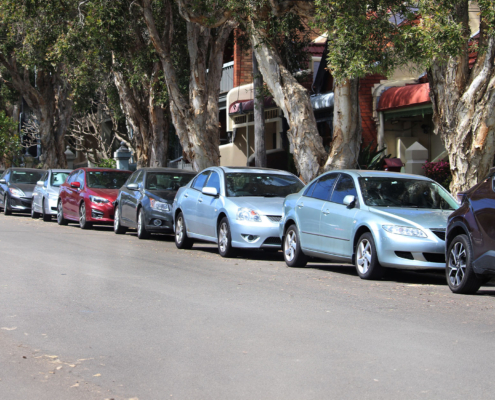
Preparing Your Commercial Fleet for Fall Weather With Business Auto Insurance
Fog before sunrise, slick leaf film after a quick shower, and darkness arriving halfway through your last route. Fall in Missouri stacks small hazards that add up to big losses. One crash can trigger repair bills, rental costs, missed deliveries, and liability. The play here’s simple. Ready the vehicles, refresh your drivers, confirm state compliance, and pair it with business auto insurance that actually fits how and where you operate.
Why Fall Weather Puts Fleets at Higher Risk
Missouri’s seasonal shift compresses several risk factors into a short window. The weather changes fast, and so does your exposure on the road. Plan around three troublemakers.
Fog and Reduced Visibility
Cool mornings produce dense fog in river valleys and low-lying stretches. Sight lines shrink, brake reaction times get tight, and minor tailgates become expensive rear-end claims. Routes that feel routine in July require larger following gaps and earlier braking in October. Teach drivers to slow earlier than instinct tells them, and to treat every merge and off-ramp as a blind corner until conditions improve.
Slick Roads and Leaf Film
After the first leaf drop, light rain mixes with organic debris and leftover summer oils. The result feels like black ice at city speeds. Stopping distances lengthen, rear axles fishtail under light loads, and ABS works harder. Your best defense is mechanical readiness and driver mindset. Smooth inputs, longer gaps, earlier downshifts, and fewer abrupt lane changes will keep most incidents off your loss runs.
Early Darkness and Fatigue
Shorter days push more miles into twilight and night. Headlight performance, reflective conspicuity, and driver fatigue matter more than they did a month ago. Make sure lamps are bright and aimed correctly, cabin glass is clean inside and out, and drivers are coached on glare management and micro-breaks. You can’t change the sunset, but you can change how prepared your people and equipment are when it comes.
When you tighten these fundamentals, you reduce the odds and severity of cold-season incidents. You also give your risk transfer partner room to work when the unexpected happens.
The Maintenance Plan That Keeps You Rolling
Fall maintenance should be short, focused, and ruthless about the basics. A few targeted checks deliver outsized returns.
Tires and Brakes
Confirm tread depth across the full width of each tire. Uneven wear is a signal to correct alignment or suspension before slick roads amplify the problem. Set pressures to manufacturer specs when tires are cold. Fluctuating temperatures can swing PSI enough to affect stopping distances. Inspect pads, rotors, lines, and calipers, and clear any warning lights now, not after a hard stop goes wrong.
Lights, Visibility, and Wipers
Test low and high beams, fog lights, brake lights, turn signals, and markers. Replace cloudy headlamp lenses and aim beams correctly to avoid dark spots. Install new wiper blades, top off washer fluid with freeze protection, and remind drivers to keep glass clean on both sides. Small visibility gains prevent big headaches.
Fluids, Batteries, and Under-Hood Checks
Top off oil, coolant, and brake fluid. Look for weeping seals or slow leaks that’ll worsen as temps drop. Load-test batteries. Cold cranking failures spike with the first real cold snap, so don’t discover a weak battery at 5:30 a.m. on a delivery yard.
Telematics, Cameras, and Alerts
Update firmware, calibrate cameras, and verify GPS pings in low-light corridors. Turn on harsh-braking, tailgating, and speed alerts for a few weeks. Real-time coaching turns near-misses into learning instead of losses. A well-maintained fleet runs safer and steadier, and that’s what helps stabilize business auto insurance costs over the long haul.
Want a fast confidence boost before the season? Book a quick review with NEC Insurance. We’ll walk through your maintenance plan, verify state compliance, and confirm your business auto insurance is tuned for fall without bloating your premium strategy.
Missouri Requirements to Confirm Before the First Cold Snap
Compliance isn’t exciting until it’s the reason a vehicle’s parked. Use this quick review with your ops lead.
Liability Minimums and Uninsured Motorist
Missouri requires proof of financial responsibility, commonly expressed as minimum liability limits and uninsured motorist protection. Many fleets carry higher limits to protect the balance sheet. Confirm your proofs are current in every vehicle and that your limits match today’s risk, not last year’s assumptions. Carry proof of business auto insurance where your drivers can find it in seconds.
Annual Vehicle Inspections and Records
Commercial vehicles need periodic inspections, at least annually. Keep current inspection reports accessible and retain prior reports for the required period. If you outsource to a shop, verify that documentation is complete and stored where auditors and managers can retrieve it quickly.
USDOT Numbers, Medical Cards, and Markings
If your vehicles meet commercial thresholds, you may need a USDOT number even for intrastate operations, and the number must be marked on the vehicle. CDL drivers operating in non-exempted commerce need valid medical examiner’s certificates. Tie renewal dates to one internal calendar so nothing lapses in the middle of peak season.
Emissions in the St. Louis Region
Depending on the vehicle and registration, units garaged in the St. Louis area may be subject to emissions testing. If you shift routes or relocate equipment into those counties for the fall, update your compliance file before tickets or inspection failures take your truck off the road.
Requirements evolve. When in doubt, confirm with your compliance manager and your agent. A ten-minute call now is cheaper than a roadside violation later.
How Coverage Responds When Weather Wins
Even when you do everything right, fall finds a way to test your plan. Build your program so an incident is a speed bump, not a shutdown.
Core Protections You Should Understand
Liability pays when your driver is legally responsible for injuries or property damage to others. Collision pays for damage to your vehicle after an impact. Comprehensive responds to non-collision losses like hail, falling branches, theft, vandalism, and animal strikes, which increase at dawn and dusk in the fall. Medical payments or personal injury protection help with medical costs for occupants, depending on the form. Hired and non-owned auto extends liability to rentals and employee vehicles used for business. Rental reimbursement and downtime coverage keep routes moving while a covered unit’s in the shop. Towing and labor prevent a small roadside event from becoming a long delay.
Build Around Your Actual Exposure
If your work pushes more miles into the dark, make sure lamps and reflective equipment are part of your maintenance plan and that your limits reflect nighttime crash severity. If your routes pass through high-fog corridors or wildlife zones, prioritize driver coaching and consider dash cameras with good low-light performance. Then build your business auto insurance around those realities so claims get paid, cash flow stays stable, and your customers barely notice a hiccup.
Ask your agent about:
- Higher liability limits paired with a smart deductible strategy
- Hired and non-owned exposure during seasonal peaks
- Rental reimbursement and downtime limits that actually cover your real-world costs
- Glass, towing, and roadside options that shorten the disruption
When to Schedule Your Pre-Season Review
Put two dates on the calendar. First, a standing September review for vehicles, drivers, and paperwork. Second, a renewal-timed meeting forty-five to sixty days before your policy anniversary so you can adjust limits, add endorsements, and quote options without rushing. If you add or retire units, change routes, or suffer a claim, do an immediate mini-review. Short, consistent touchpoints keep your fleet and coverage in lockstep with the way you actually operate.
Put NEC Insurance in the Driver’s Seat This Fall
Missouri fleets don’t need a complicated plan. They need a complete one. That means tuned vehicles, trained drivers, airtight compliance, and business auto insurance that backs you up when weather tests your routes. NEC Insurance pairs a Missouri-first perspective with strong carrier access, so you get choices that fit your vehicle classes, mileage, and budget. We speak plainly, we move quickly, and we stay with you if a claim happens.
Ready to roll with confidence? Schedule your fleet review with NEC Insurance and head into fall with safer drivers, clean compliance, and coverage built around your routes.
Share This Post


About Us
NEC Insurance supports Missourians with high-quality coverage for businesses and individuals. We apply over 45 years of experience to help you navigate the market and deliver the policies you deserve.






